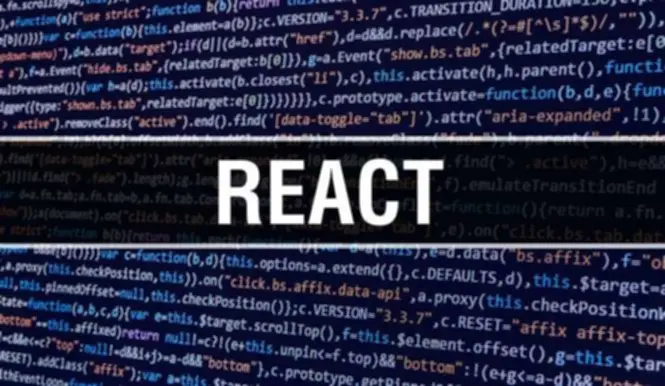Automated pipelines improve development velocity and enhance code high quality, and we’re actively working on making them even higher and simpler to use. While writing the .gitlab-ci.yml file, use a textual content editor or IDE that supports the CI YAML syntax. You can also (semantically) validate the file on the GitLab server, see docs. Doing so avoids that you simply gitlab consulting by chance push commits that break the pipeline definition, just because the .gitlab-ci.yml file is invalid. Most commonly, GitLab already launches CI/CD jobs as Linux containers.
Set Off A Pipeline When An Upstream Project Is Rebuilt

Wojciech enjoys working with small groups where the standard of the code and the project’s direction are important. In the lengthy term, this enables him to have a broad understanding of the subject, develop personally and search for challenges. Additionally, Wojciech is excited about Big Data instruments, making him an ideal candidate for numerous Data-Intensive Application implementations. As you can see, jobs are easy, the one duty of the job is to create or replace files, however it is excellent for additional rationalization.
What Are The Totally Different Levels Of A Gitlab Ci/cd Pipeline?
If a team needs to change CI instruments at one other point, pipelines can be moved into a brand new system. Whenever you push code (running git push) that consists of one or more commits, GitLab runs a branch/MR pipeline only for the newest commit of that push. GitLab CI/CD variables are key-value pairs you utilize to store and move configuration settingsand sensitive info, like passwords or API keys, to jobs in a pipeline. This iterative course of helps reduce the possibility that you develop new code primarily based onbuggy or failed previous versions.
Why Ought To It Leaders Use Ci/cd Pipelines?

These tests are designed to ensure the integration between GitLab and the Observability Backend is functioning accurately. Apply the label to the merge request, and run a new pipeline for the MR. Additionally, sometimes the habits of a pipeline must be extra dynamic. The abilityto choose to start out sub-pipelines (or not) is a robust ability, especially if theYAML is dynamically generated.
Move Dotenv Variables Created In A Job
- The test stage is where the code is assess to make sure there aren’t any bugs and it’s working the way it was designed to before it reaches finish customers.
- If a Ruby file is renamed and there’s a corresponding prepend_mod line,it’s likely that GitLab JH is counting on it and requires a correspondingchange to rename the module or class it’s prepending.
- Defining such dependencies is required as a result of a single job doesn’t do the whole job on its own.
- With GitLab CI/CD, we are able to automate the deployment of testing environments and save a ton of time.
- A strict security mannequin is enforced when pipelines are executed onprotected branches.
It helps ensure the quickest attainable execution whatever the stages’ configurations. A GitLab pipeline executes several jobs, stage by stage, with the assistance of automated code. Deployment pipelines are in a version management system independent of continuous integration instruments. Pipelines may be restored if the continual integration system goes down.
Instead of constructing pipelines from scratch, CI/CD templates simplify the process by having parameters already built-in. In this file, you define variables, dependencies between jobs, and specify whenand how every job must be executed. If you employ an exterior CI/CD server likeJenkins or Drone CI, you can disable GitLab CI/CD to keep away from conflicts with the commits status API. Then other users and projects can access the configuration file without beingable to edit it.

Continuous testing can even provide useful feedback to developers concerning the high quality of their code, serving to them to establish and tackle potential issues before they are launched to manufacturing. In a steady delivery pipeline, code adjustments are mechanically built, examined, and packaged in a means that enables them to be deployed to any environment at any time. It can be used to manually trigger deployments, or it can be prolonged to incorporate steady deployment, where deployments to clients and end users are also automated. The staging stage has a job referred to as deploy-to-stage, the place a team can conduct further checks and validation. It is adopted by a manufacturing stage with a job called deploy-to-production. If the code passes a collection of automated exams, usually the build will mechanically deploy.
The server could be the SaaS offering (gitlab.com), or your company’s self-hosted instance. If you utilize gitlab.com, there are already shared runner cases that you need to use, see these docs. For self-hosted GitLab servers, your IT division usually sets up shared runners for you, and documents the way to use them. The basic idea of stages is to introduce a digital “barrier”, in order that first all jobs of a particular stage have to complete efficiently, before jobs of the next stage start.
The primary distinction is that Gitlab pipelines allow collaboration and provide a clean environment for every build as a outcome of docker photographs may be used. An environment that ensures repeatability is the important requirement of the software program development lifecycle with CI/CD configured. An executor is a service that receives assignments from the runner and executes jobs defined in .gitlab-ci.yml. Several types of executors allow you to select an surroundings where the job is executed. The simplest one is shell executor, which makes use of a shell on the machine where the runner is put in – it implies that it might be your laptop. Unfortunately, shell executor does not guarantee a clean surroundings for each job and requires manual installation of the mandatory software program.
It keeps configuration simple and only requires one keyword to allow any job function. You can use a DAG to define the connection between the jobs—GitLab will execute these jobs as quickly as potential somewhat than waiting for every stage to complete. GitLab supplies an online code storage location, as properly as CI/CD and issue tracking capabilities. The GitLab repository lets you host completely different versions and growth chains, so customers can explore older code and roll back the software program when unexpected points come up.
This article provides an in depth introduction to the final ideas of GitLab CI/CD pipelines. It discusses the anatomy of the pipeline definition file, how GitLab distributes and runs jobs on runners, and what good practices you possibly can observe. I also clarify how the containerization of CI jobs impacts their capacity to build Docker/OCI images. Verify thatthe new pipeline incorporates the pages job that deploys the positioning. A downstream pipeline can provision infrastructure, deploy to a delegated environment, and return the deployment statusto the upstream project. Do not use this methodology to cross masked variablesto a multi-project pipeline.
If there is something to do, the runner downloads job particulars and triggers an executor. Executor clones the git repository, downloads artifacts, and executes jobs defined in .gitlab-ci.yml. You can register several runners and use them the entire time with out utilization limitations outlined by GitLab, which right now could be four hundred minutes within the free tier.
This permits organizations to be more nimble and get new options into the palms of users sooner. CI/CD is essential because it automates the software program development course of, from coding by way of deployment. This automation means groups can launch new features and fixes faster and more regularly, enhancing the product’s responsiveness to consumer wants. By constantly integrating and deploying, errors are detected sooner, decreasing downtime and enhancing software high quality. The second definition of CD and the final stage of a CI/CD pipeline is steady deployment.
You can customise which roles have permission to cancel pipelines or jobs. This can result in a state of affairs the place an older deployment job runs after anewer one, which is probably not what you want. As the Ruby script is generating YAML, make sure the indentation is correct, or the pipeline jobs will fail. In each instances, the child pipeline generates an artifact you can download underneath the Job artifacts section of the Job outcome display screen. Follow our article collection to get perception into our developers’ current work and study from their expertise. Expect to see technical details, structure discussions, evaluations on libraries and instruments we use, best practices on software program quality, and maybe even some fail stories.
Transform Your Business With AI Software Development Solutions https://www.globalcloudteam.com/